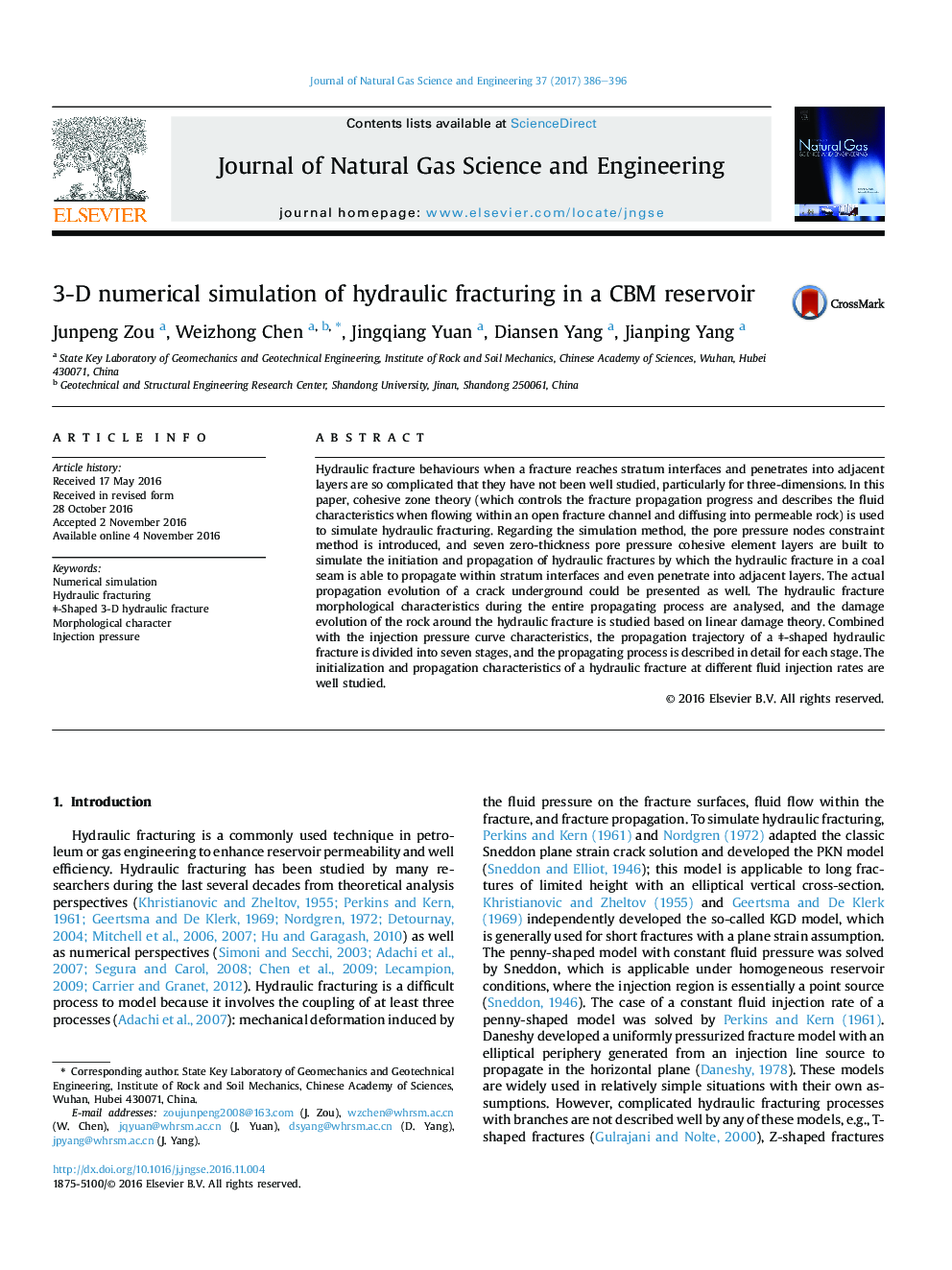| Article ID | Journal | Published Year | Pages | File Type |
|---|---|---|---|---|
| 5485230 | Journal of Natural Gas Science and Engineering | 2017 | 11 Pages |
Abstract
Hydraulic fracture behaviours when a fracture reaches stratum interfaces and penetrates into adjacent layers are so complicated that they have not been well studied, particularly for three-dimensions. In this paper, cohesive zone theory (which controls the fracture propagation progress and describes the fluid characteristics when flowing within an open fracture channel and diffusing into permeable rock) is used to simulate hydraulic fracturing. Regarding the simulation method, the pore pressure nodes constraint method is introduced, and seven zero-thickness pore pressure cohesive element layers are built to simulate the initiation and propagation of hydraulic fractures by which the hydraulic fracture in a coal seam is able to propagate within stratum interfaces and even penetrate into adjacent layers. The actual propagation evolution of a crack underground could be presented as well. The hydraulic fracture morphological characteristics during the entire propagating process are analysed, and the damage evolution of the rock around the hydraulic fracture is studied based on linear damage theory. Combined with the injection pressure curve characteristics, the propagation trajectory of a Ç-shaped hydraulic fracture is divided into seven stages, and the propagating process is described in detail for each stage. The initialization and propagation characteristics of a hydraulic fracture at different fluid injection rates are well studied.
Related Topics
Physical Sciences and Engineering
Earth and Planetary Sciences
Earth and Planetary Sciences (General)
Authors
Junpeng Zou, Weizhong Chen, Jingqiang Yuan, Diansen Yang, Jianping Yang,
